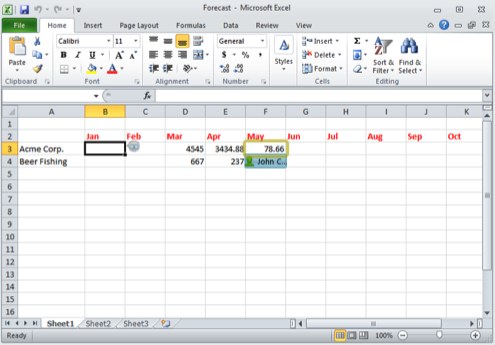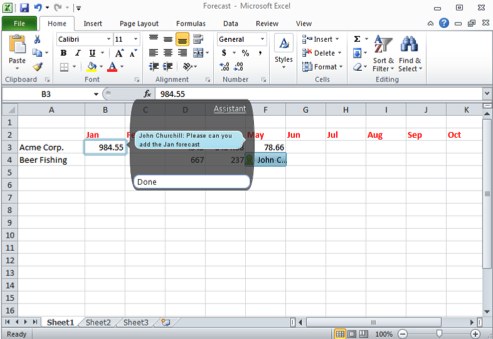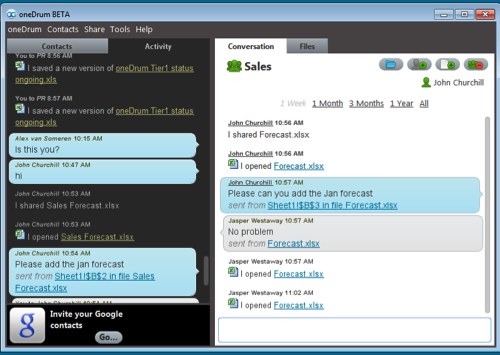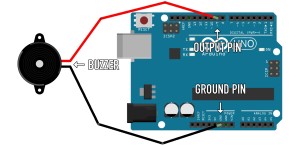Having trouble getting your clients to use Google Docs? I know the feeling. My clients work a lot in MS Office, and many are too scared to try Google Docs, think it’s too much of a hassle, or can’t access it from restricted corporate networks. The result is outdated documents, endless change-merging—you name it. It seems I’m always searching my emails looking for the latest version of whatever they’ve sent me.
Finally, there’s a solution. oneDrum, released this week, is a peer-to-peer coauthoring platform like Google Docs, based entirely in Microsoft Office.
It offers:
- automatic syncing of shared folders and files, so everyone always has the latest version on their computer
- complete version history, so you can roll back to a previous version of the file at any time
- real-time editing of documents (on PC, coming soon to Mac)
- and end to confusion between system and application keystrokes and clipboards
- all over a peer-to-peer desktop application.
Oh, and it’s free.
Yes, it’s still something that clients who are new to real-time collaboration and file sharing will need to adjust to. But the fact that it takes place within the nice, cosy, familiar Office environment is likely to make that transition a whole lot easier.
Real-time collaboration in Office
The thing we all love about Google Docs? It makes collaboration easy. Until now, Office has necessarily entailed delayed collaboration, which—let’s face it—is painful.
The real-time collaboration features in oneDrum are very, very cool. As you’re looking at a document, a blue bubble appears to show you who else is editing the document, and which part they’re editing. It even shows you their keystrokes as they’re typing.

This lets you avoid overwriting each others’ work, but also means you can both alter a document simultaneously. Cool? Cool. It looks a lot like this will deliver smoother collaboration with fewer errors, in less time.
This feature is, sadly, only available to PC users at present, but is slated for inclusion in the Mac version a.s.a.p.
On the plus side, all oneDrum users can use the system’s messaging system, which allows you to add comments to specific points within a file.

These comments then appear in the relevant user’s Activity Stream, which we’ll look at next.
A new To-Do list?
Many of us use email as a sort of to-do list. If you’re collaborating with others in MS Office, some of your daily emails will inevitably contain new versions of files that have been updated by your colleagues. “Here’s the final-final-FINAL version of the home page copy,” you read. “Please edit and publish a.s.a.p.” Great: add it to your list and move on to email #276 for the day.
I think oneDrum might cause a change to this workflow … if indeed you can call it a “flow”. Check this out:

That’s oneDrum’s Skype-like Activity Stream. It shows, at a glance, the work being done on files by colleagues in a given group, at any time.
There’s no need to email your updated file to everyone before you leave for the day, telling them what you’ve changed. With oneDrum, that update is automatically recorded in the group’s Activity Stream. Since all the files are automatically synced to everyone’s computers, you don’t need to worry about sending the updated file, either.
When your colleagues come online tomorrow, they’ll see the note about your updates in their Activity Stream. They can click on the link to be taken to the part of the file you’ve updated. Similarly, you’ll see their updates in your Activity Stream, and you can use this, rather than email, to guide your task list for the day.
Bottom line? I think oneDrum could reduce your email load and make getting stuff done more straightforward. Woo!
An admirable philosophy
When I was speaking with oneDrum CEO and founder Jasper Westaway last week, he explained the impetus behind the platform.
“Collaboration should be a pleasure, not a pain,” he said. “Most collaboration tools increase the user burden. But if you’re thinking about how you’re collaborating, something’s gone wrong.”
oneDrum’s philosophy is simple: collaboration is about getting the best document for the lowest “cost”—a word that implies the time it takes individual collaborators to source information, find the right file, merge changes, make changes, and get the file to other collaborators for inputs, review, and approvals.
oneDrum aims to reduce that document “cost”.
“Documents are about people,” Westaway said. “oneDrum puts the focus on the activities of collaborators, rather than the documents themselves.”
Now that’s a productivity approach I can get behind. What do you think: any chance oneDrum could be useful in your work with clients or collaborators?
Georgina has more than fifteen years' experience writing and editing for web, print and voice. With a background in marketing and a passion for words, the time Georgina spent with companies like Sausage Software and sitepoint.com cemented her lasting interest in the media, persuasion, and communications culture.




